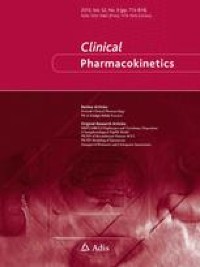Abstract
Background and Objective
Fetal circulation is unique and the parameters describing hemodynamic status during development are critical for constructing a fetal physiologically based pharmacokinetic model. To date, a comprehensive review of circulatory changes during fetal development, with a specific focus on developing these models, has not been reported. The objective of this work was to collate, analyze, and mathematically describe physiological information on fetal cardiac output and tissue blood flows during development.
Methods
A comprehensive literature search was carried out to collate and evaluate the changes to fetal cardiac output and fetal tissue blood flows during growth. The collated data were assessed, integrated, and analyzed to establish continuous mathematical functions describing the average parameter changes and variability during development.
Results
Data were available for fetal cardiac output (14 Doppler studies), blood flow through the fetal umbilical vein (15 studies), ductus venosus (6 studies), liver veins (5 studies), brain (4 studies), lungs (5 studies), and kidneys (2 studies). Fetal cardiac output is described as either an age- or weight-dependent function. The latter is preferred as it generates an individualized cardiac output that is correlated to the fetal body weight. Blood flow as a proportion of fetal cardiac output to the liver, placenta, brain, kidneys, and lungs was age varying, whilst for the adipose, bone, heart, muscle, and skin the blood flow proportions were fixed. The pattern of change (with respect to direction and pace) for each of these parameters was different.
Conclusions
Despite limitations in the availability of some values, the collected data provide a useful resource for fetal physiologically based pharmacokinetic modeling. Potential applications of these data include predicting xenobiotic exposure and risk assessment in the fetus following the administration of maternally dosed drugs or unintended exposure to environmental toxicants.



No comments:
Post a Comment